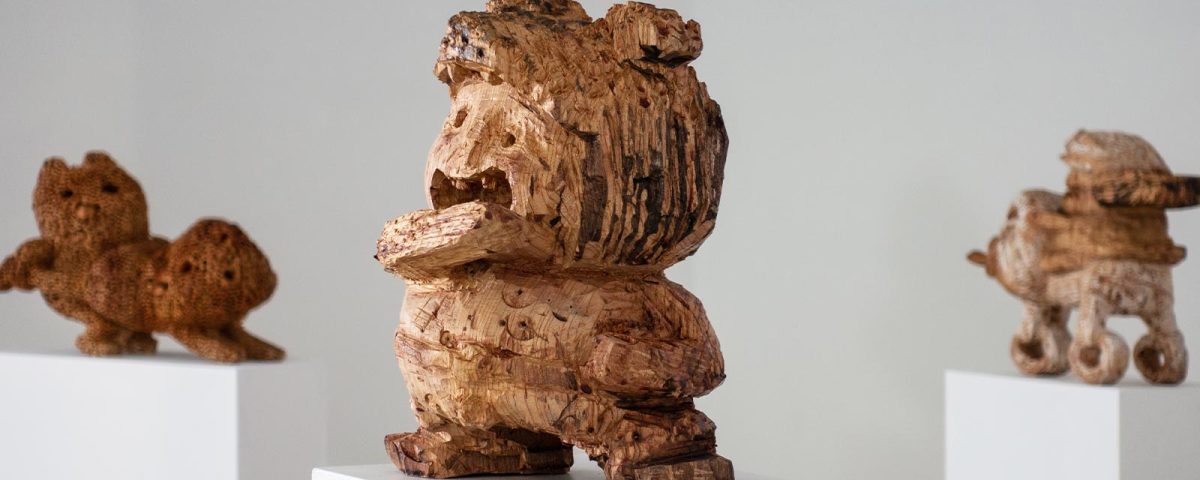
HIROSUKE YABE
Opening
10/02/2024, 4–6 pm
HIROSUKE YABE
Saturday 10/02/2024, 4–6 pm
Hirosuke Yabe, born in Kanagawa in 1972, lives in Yokohama, Japan.
He received a BFA in sculpture in 2002 and continued his studies as a research student at Tokyo Zokei University of Art and Design in 2004.
Yabe cites Eduardo Chillida, Richard Serra, the Mono-ha (an artistic movement in 20th century Japan) and African masks as early influences until 2011 when the Fukushima nuclear disaster, which deeply shook Japanese society, caused a radical change in his artistic approach.
With his sculptures, Yabe seeks answers to questions about the forms of human existence. His work can be understood as a reaction to the catastrophe; the absurd in all its variations - grotesque, tragic, melancholic, comic - has been his means of expression ever since. (In this way, his approach is similar to that of the Theater of the Absurd, which attempted to depict the disorientation of modern man as a reaction to the horrors of the Second World War).
He finds motifs in traditional myths and fairy tales as well as in the world of popular manga, anime and emojis. His exploration of the anima leads to depictions of animals, humans and anthropomorphic creatures, sometimes isolated, sometimes interacting. As in mythology, fairy tales and animated films, Yabe's animal creatures symbolize human characteristics and behaviour. Some of his motifs are also familiar to the Western canon of images, while others require a knowledge of Eastern mythology and Japanese popular culture in order to be understood. However, all of his works have an immediate appeal that is effective across cultures.
Since 2011, Yabe has mainly used chisels and nata, the Japanese axe, to carve the wood of the zelkova tree, wood that comes from the demolition of traditional Japanese buildings, which are often over 100 years old.
In his anti-naturalistic, emotionalized sculpture combined with motifs from Japanese popular culture, there are parallels to Takashi Murakami, who coined the term "Superflat" for his art. Murakami's Japanese answer to Pop Art, which dominated everything in the West - especially in the USA in the 1960s. The Japanese art critic Noi Sawaragi coined the term "Japanese Neo Pop" to describe the combination of traditional Japanese art with popular forms of expression from the subculture.
Yabe, however, takes a different approach. His crudely designed yet expressive figures form an exciting contrast to the smoothed, synthetic references from manga and anime, as well as to the formally rigorous traditional sculpture and not least to Western modernism, which influenced his early works. His wooden sculptures are linked to the tradition of the Edo period (1625 - 1868), which was characterized by a preference for expressionist and eccentric motifs. As with the Japanese Buddhist monk Enkū (1632-1695), who carved around 120,000 statues, no two Yabe sculptures are the same. Each of his sculptures shows one or other of the many facets of life that inspire him, the beauty, the ugliness, the joy, the pain, the comedy, the absurdity - in other words, the dilemmas of life.
THERE IS CURRENTLY NO EXHIBITION ON DISPLAY.
UP-Coming Exhibition:
ANETA KAJZER
aufgelöst
Preview
Fr 08/09/2023, 6–9 pm
MORE ABOUT ANETA KAJZER
